Winter is already peeking its head around the corner, and you need to prepare for it. So, what better way to do that than reading about all the best ways to heat a garage?
Walking into a garage in the winter, with all its concrete floors and no heating, is like entering a huge freezer. It’s cold, it’s uncomfortable, and most of all—too much cold can damage your car and all the other stuff in your garage. If you’re constantly working in there, the more you need to install a heating unit to keep your fingers from freezing off.
Therefore, in this article, I’ll be laying out the options for you based from my past experiences: here are the best ways to heat your garage before the coldest days of the year roll around.
There is no “best and only” way to heat a garage. In fact, there are several methods that we can choose from, and the success of our chosen method will depend on certain factors, namely: correctness of installation, efficiency of product chosen, and overall cost of installation and upkeep.

Needless to say, you need to think carefully about what heating system fits you and what would be beneficial in the long run. I want to highlight several cases I have encountered to explain this: Last winter, during the days when the cold was at its worst, I had my radiant heat system running hot water throughout my garage pipes.
Now, I had to go through a lot of renovation and ATM withdrawals (this method is quite expensive) to have this project finished. The reason for this is that, during winter, I work in my garage just as frequently as in other times of the year.
My radiant heat system keeps the garage warm for me and my tools without blasting the bills through the roof. Bottom line is: choose the right system that works for you. If you’re going to be working all-year round in your garage, choose a system that can provide you enough heat.
1. Forced Air Heaters
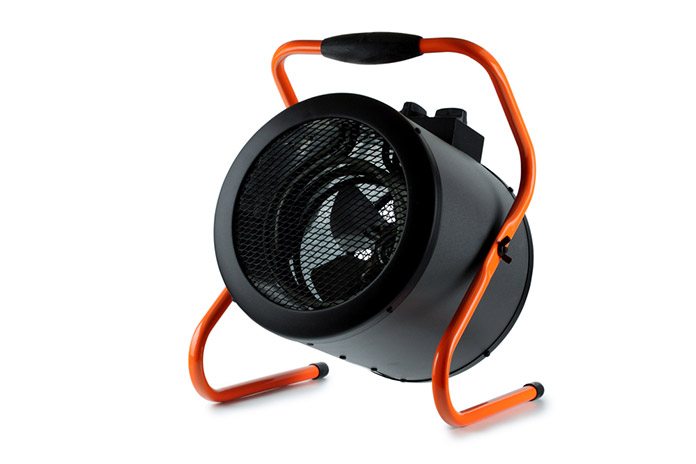
These devices “force” heat into the air, which then circulates the area it occupies. A forced air heater needs both an electrical source and a fuel source to run, which means you need a connection to an electrical outlet and a gas line.
Note: some air heaters need a hose to function.
Forced air heaters can heat up a garage quite quickly, won’t overheat surrounding area too rapidly, and are less expensive to install. However, the heat they produce is uneven (cold settles at the bottom) and takes too long to reheat an area when, say, you momentarily open your garage door.
You can save money on the initial installment of a forced air heater but in the long run, with constant use, the gas and electric bill may eat up the money you saved with the cheap installation.
Moreover, you have two options when choosing a forced air heater for your garage: either buy a floor unit or an overhead heater. Floor air heaters can be movable and less expensive, while overhead heaters are more expensive but can have access to ventilation (which is essential) unlike floor heaters.
In conclusion, forced air heaters are recommended for people who won’t be needing constant heat in the garage (the lower installation price will be advantageous in this case).
Although, you still may have to turn your heater on from time to time even if you’re not using the garage. This will prevent water in your tools or car (hose, wheels, rubber tubes, etc.) from freezing and cracking up, especially in the harshest of weathers.
Pros
- Small installation cost
- Heats up surroundings rapidly
- Can be practical for non-constant use
Cons
- Expensive in the long run
- Uneven heating
- Slow reheating
2. Radiant Heat
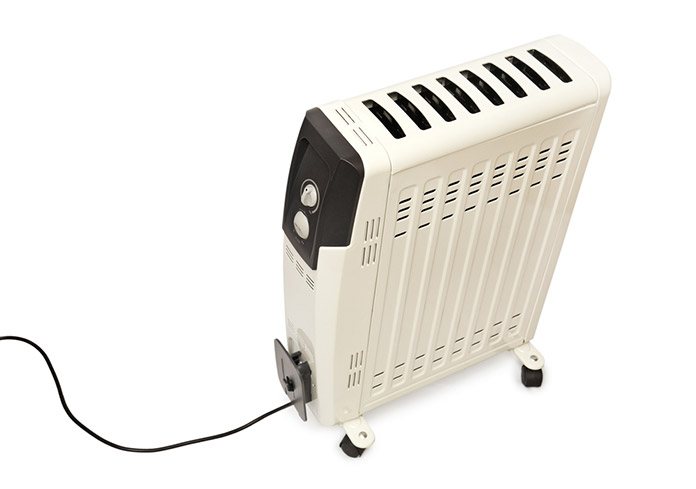
This system involves a water heater and installation of pipes underneath the floor of your garage or inside the walls. The mechanism is quite simple. For this system to heat up your garage, the water heater will need to boil the liquid inside the pipes. With this hot water flowing under your garage floor or walls, heat will be transferred to the surroundings through simple physics.
The most important advantage of this radiant heat system is that it costs less in the long run, with the only real expense being the fuel for your water heater. Additionally, it also heats up your air very well without causing as much pollution, which is a plus if you want to go for greener energy.
However, radiant heat systems are undeniably more expensive and complicated to install, and I recommend installing this system before filling in the floor of your garage (in the case of newly built homes) to install the pipes easily.
Nevertheless, radiant heat systems are the cheapest and most practical option for people who use heating in the garage constantly.
Pros
- Inexpensive upkeep
- Heats the air well
- Heats your things and car sufficiently
Cons
- Expensive and complicated installation
3. Infrared Heaters
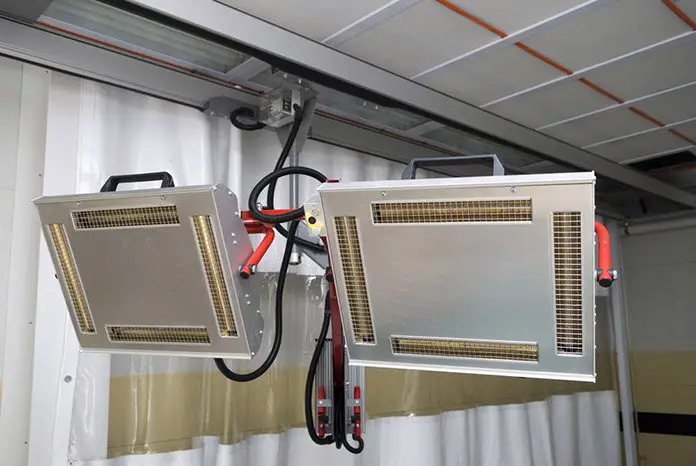
Low-intensity infrared heaters can either use gas or electric fuel source. This type of heating system transfers heat to colder objects instead of the air, which means that it is recommended for chilly garages and workstations with a lot of tools.
Advantages of an infrared heater include its ability to heat a certain space evenly; the low cost of operation which is advantageous to people who constantly use the garage; and higher heat retention if cold air is introduced to the environment (when you open a door).
On the other hand, the disadvantages of infrared heaters are its expensive installation cost and a very specific installation point. Nevertheless, the expensive and complicated installation will entail lower cost of upkeep when it comes to using the system to heat your garage everyday.
Pros
- Low-cost in the long run
- Heat retention
- Even heating
Cons
- Expensive installation cost
- Difficult to install
- Must have minimum distance between other objects
4. Gas/Wood Burner
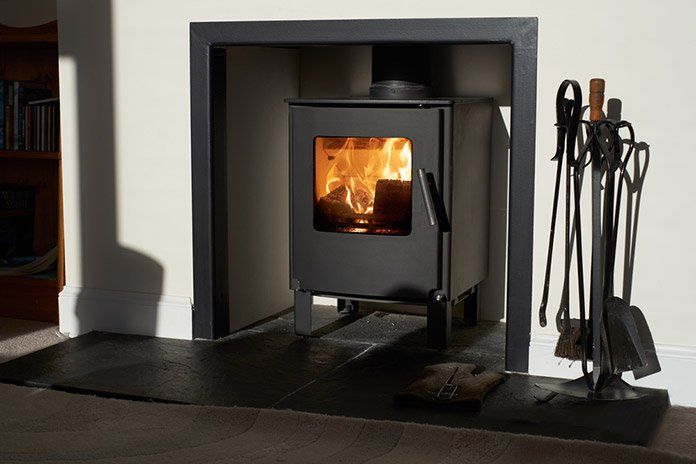
A gas or wood burner employs a simple mechanism: burn the gas or wood and produce heat, which is distributed all throughout your garage. Of course, this system requires a good ventilation port to keep fumes outside your home.
One advantage of this system is that it can be cheaper than the other options, especially if you have lots of lumber available for burning, and it’s also a system that produces a lot of heat.
On the other hand, this heating system for your garage requires constant refilling of fuel or wood to keep your garage warm. Plus, it’s also a pollution-generating system.
Pros
- Heats up your garage well
- Relatively cheap
- Simple operation
- Simple installation
Cons
- Pollutant
- Needs a lot of gas and wood (with constant use)
- Needs constant refilling
Conclusion
When choosing the right way to heat up your garage, consider the following factors: installation, efficiency, and cost. Different heating systems have varying installation procedures and all have different costs and degree of complexity. Having said this, select the heating system that you can afford and feasibly install in your garage.
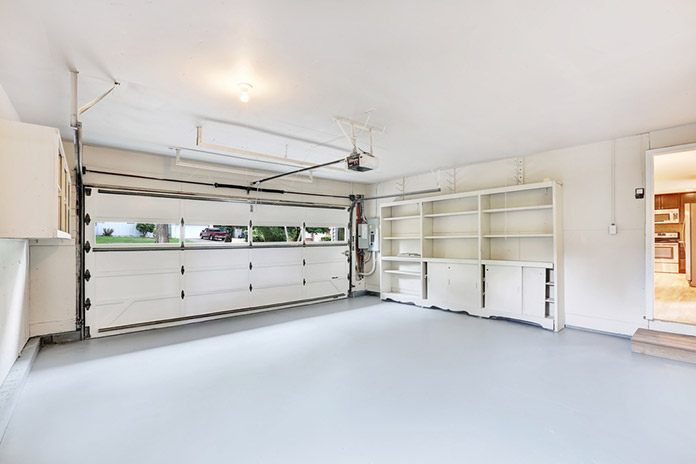
Furthermore, consider the efficiency of each system. This factor will depend on the type and frequency of work you’ll be doing in the garage. For example, a cheaper method of heating your garage will be better if you’re going to be working there only a few times each week.
Moreover, efficiency will also ultimately depend on the type and brand of unit you choose.
Lastly, cost is the factor frequently considered by most people. Again, invest in a high-quality (mostly probably expensive) heating system for your garage if you’re going to be doing work there constantly. On the other hand, a cheaper alternative will do if you’re only buying a heater to keep your cars and tools safe from the cold.
And that’s all you need to know! Now that we’ve discussed every one of the best methods to heat your garage, select the right one for you and your home. If you liked this article, don’t forget to leave a comment below.
By the way, check this artice to see our best garage heaters picks. Share this with your friends so they can learn to heat their garage for the winter, as well! Thanks for reading.

